Trivia about the Various Species of Pigeon
- Mindanao Bleeding – Heart Doves (Galllcolumba criniger)
The Mindanao bleeding-heart doves are rare and found in the forest running on the ground, singly or in pairs. Distinctive on their three grey wing bars, chestnut back and secondary wing features, white throat extending around large deep orange red patch on breast and cinnamon belly and undertail coverts. They call soft co-co-ooot lasting 1.5 seconds and repeated every 5 seconds.
2. Nicobar Pigeon (Caloenas nicobarica)
Nicobar pigeons are rare and local on small, forested inhabited island, hardly ever on larger ones and they are usually along the coast. Walks and feeds on the ground but will flush up into the canopy. They call deep growl gwwooow lasting.5 seconds, often given in pairs with 4 seconds pause between notes.
3. Black-chinned Fruit Dove (Ptilinopus leclancheri)
Black-chinned fruit doves are uncommon in forest patches up to 1500 meters but maybe common on small islands like the Batan Island. They call deep hollow rooooooo starts sharply, tapers at end and lasts 0.4 to 0.7 seconds, often repeated.
4. Metallic Pigeon (Columba vitiensis)
Metallic pigeons are uncommon, but may be locally common on small to large islands in forest and forest edge, alone, in pairs or in small groups up to about 1500 meters. Shy flushes with loud wing clapping. They are large with all dark grey or blackish plumage with purple or green irridescence and light grey throat. They call a deep base wuuuu woooo the first note rising, the second level often repeated a second time.
5. Pink-necked Green Pigeon (Treron vernans)
Pink-necked green pigeon are uncommon, in lowlands from mangroves, cultivated areas, and forest, usually in groups. The male is unmistakable with pinkish and orange breast and dark rufous undertail coverts. Female pink-necked green pigeon can be differentiated from other green-pigeons through their yellow belly and one yellow wing bar and by pale golden green uppertail coverts. They call mournfull coo and longer chuckling cooing whistle 000-000, cheweeo-cheweeo-cheweeo.
6. Amethyst Brown-Dove (Phapitreron amethystina)
Amethyst Brown Dove are common locally, in forest and forest edge up to 2000 meters, singly or in pairs. In Mindanao, it tends to be more common at elevations above 1000 meters. This kind of dove has larger bill, less conspicuous white “ear”, violet upper back, and cinnamon undertail coverts separate it from White-eared Brown Dove. Dark eared – Brown Dove lacks white line below eye. They call soft, hollow hoot, hoot hoot, or hoot hoot hoot.
7. Grey Imperial – Pigeon (Ducula pickeringii)
Grey Imperial Pigeons are common, but local on remote forested islets in the canopy in fairly large groups. They travel between small islets to feed, apparently depending on leaves and available fruits or food. Easily separated from more widespread Green Imperial – Pigeon by brownish grey wings and blackish tail and by grey, not chestnut undertail coverts. They call resonating 001 aaoooh, second oote long and wavering.
8. Red Turtle Dove (Streptopelia tranquebarica)
Red Turtle Dove are fairly common in open country or lawns feeding on the ground or resting in trees or on telephone wires, usually in pairs or small groups. A plump short-tailed ground dove, with indicative narrow black collar. They call a throaty rhythmic croodle-oo-croo rapidly repeated.
9. Pied Imperial-Pigeon (Ducula bicolor)
Pied Imperial-Pigeons are common along the coast and offshore islands in mangrove and lowland forest, in small to large flocks. Roosts and nests communally. They are easily identified by distinctive black and white plumage. They can only be confused with black and white patterns of some domestic Rock Doves. They call deep, resonating chuckle hu-hu-hu-hu-hu.
10. Spotted Imperial-Pigeon (Ducula carola)
Spotted Imperial-Pigeon are uncommon and local from lowland forest to mossy forest to 2500 meters, usually in groups. Apparently they altltudinally taking advantage of fruiting trees. Distinctive of white crescent and dark grey lower breast separating light grey upper breast and chestnut belly and blackish spots on wings and back. They call deep descending hu-hu-hu-hu-hu-hu-huhu lasting 3 seconds.
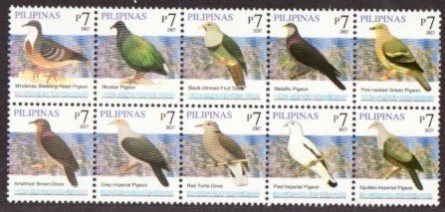
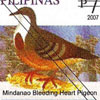
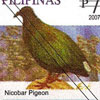
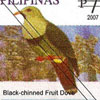
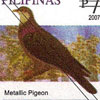
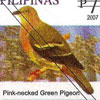
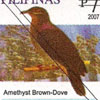

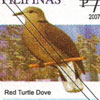
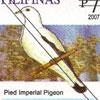

Recent Comments